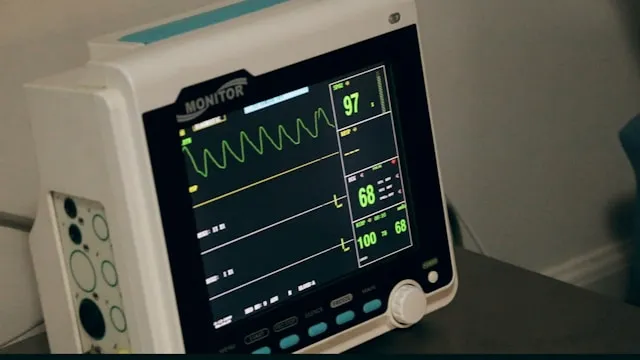A heart attack, also known as Myocardial Infarction, most commonly happens when blood flow to the heart muscle is blocked, which stops blood flow and reduces the amount of oxygen that gets to your heart. Coronary Heart Disease and Plaque Ruptures are caused by many varying factors - many of which aren’t common knowledge. Although heart attacks may seem like something that simply just happens to people in their older age or those who suffer from obesity, heart attacks are also a risk for someone of any age or gender. People are able to prevent this from happening to themselves and their loved ones with simple knowledge about the causes, symptoms and what preventative measures to take to ensure that the chances of a heart attack occurring is low.
Common Causes
There are always varying reasons why a heart attack occurs, with these being the most common:
-
Smoking - Smoking increases the risk of coronary heart disease, as tobacco smoke is absorbed into the bloodstream, damaging blood vessels and increasing the formation of plaque and clots.
-
High Blood Pressure - Blood pressure is the force exerted by blood on the walls of the arteries, depending on whether the heart muscle is contracting or relaxing. The risk of coronary heart disease and heart failure is directly related to high levels of blood pressure.
-
Diabetes - Over time, high blood sugar levels from diabetes can damage blood vessels in the heart, making them more likely to develop fatty deposits. This is associated with approximately doubling the risk of heart disease that can lead to a heart attack.
-
Obesity - Obesity increases the risk of many different diseases, including heart attacks and strokes. This is due to excess body fat contributing to the development of biomedical risk factors, including high blood pressure, abnormal blood lipids and the risk of type 2 diabetes.
-
Abnormal Blood lipids - Abnormal levels of blood lipids, like cholesterol and triglycerides - referred to as dyslipidemia - can lead to atherosclerosis, where fatty deposits accumulate in the blood vessels. This accumulation heightens the risk of various cardiovascular diseases.
While these may be the most common causes, you should also take steps to get regular check-ups to ensure you have no underlying medical conditions that increase the risk of heart problems.
Symptoms and Warning Signs
Asking for the help of healthcare professionals, like someone with a Graduate Certificate in Critical Care Nursing or your local GP, will give you the best individualised advice on how to ascertain the warning signs.
There are many different warning signs that could suggest someone is experiencing a heart attack:
-
Chest discomfort - this can feel like uncomfortable pressure, numbness, aching pains, squeezing or just general pain in your chest area. Pain like this can occur not only around your heart/chest but in areas everywhere, like arms, neck, jaw, back and shoulders. When you notice this pain coming and going, or if it lasts several minutes, this is a serious sign and should be taken seriously.
-
Light-headedness, feeling faint, dizziness, and anxiety are also other signs - while these symptoms may seem common, this, paired with the prior or following symptoms, is a good way to determine if you need to take further action
-
Shortness of breath or breathing difficulties - this can occur paired with chest pain, and without, both being a serious sign that should be of concern
-
Sudden or unexplained sweating - either normal or cold sweats are a sign to consider
Even with these common signs, depending on the person, these symptoms may look different. The hardest part of catching the signs early is when you may be experiencing the less obvious signs, such as a burning sensation in your chest or feeling slightly out of breath.
Within these common signs, it is smart to consider the differences in how symptoms may show themselves depending on sex. Women’s heart attack symptoms can sometimes be less obvious as many women commonly chalk it up to acid reflux or the common flu, with less obvious signs being most prevalent.
Prevention Strategies and How To Take Action
Obviously, the best way to prevent heart attacks is to have frequent check-ups for your heart health, especially if you’ve reached middle age or older. While you may think you’re not at risk, many people have some sort of key factor that can lead to a heart attack - 57% of people have three or more risk factors, most of which aren’t aware of the risk they are living with day-to-day.
Because of these worrying statistics, you may want to make changes to your lifestyle right away. One of the biggest things to consider is if you smoke regularly - if you quit smoking for just one year, you’ll cut the risk by 50%. While you may think smoking only endangers your lungs, it also heavily impact your heart, and due to the amount of people who are unaware of their own heart risk factors, a large number of people who smoke may pose an even greater risk without their knowledge.
Another factor to consider is your diet. Making sure you include food groups like fruits and vegetables, whole grains, high-protein foods, and healthy fats in your diet can help in reducing your risk of a heart attack. Some foods to avoid would be processed foods food with a lot of sugar and saturated fats. While you may want to snack on some chocolate or chips every now and then- that won’t cause a heart attack- consuming these types of foods regularly will lead to a greater risk.
While you may feel some symptoms but aren’t fully sure if you want to take things further, the best thing to do is find the help you need; you’ll either discover you have something else to take care of, or you’ll have prevented a heart attack.
लेखक





